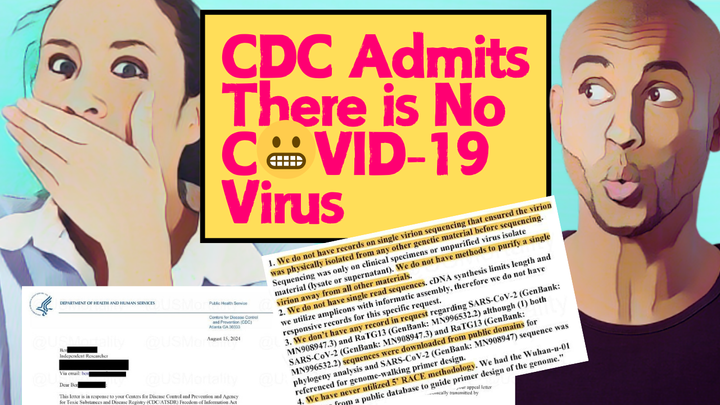Q & A: September 11, 2011
Welcome to CHEESESLAVE Q & A! Every Sunday, I answer your questions. I’ll answer as many questions as I can each week. If I didn’t answer your question this week, please check back next week.
Welcome to CHEESESLAVE Q & A! Every Sunday, I answer your questions. I’ll answer as many questions as I can each week. If I didn’t answer your question this week, please check back next week.
Submit Your Question
If you have a question to submit, please email it to me at questions AT cheeseslave DOT com.
Emails about link exchanges or requests to promote products will be deleted!
If you have an URGENT question that you can’t wait to get answered, please post it on my Facebook page. I tend to get on Facebook pretty much daily. I can’t promise to answer all the questions on Facebook, but I try! (Note: Please do NOT email me on Facebook — I can’t get through my email on there!)
1. Question: Suggestion For Water Filter? / How To Prepare Oats?
I’ve read about carbon water filters that remove most toxins, but are unable to remove others. Some things can ONLY be removed with a reverse-osmosis filter, and then the water should be remineralized with celtic sea salt.
I’m leaning towards a reverse-osmosis filter, but I’m not sure which one is best though. Dr. Mercola sells one on his site, but there’s also one on Radiant Life that seems to be good. If you could have any water filter or water filter system, regardless of price, what would you get? What is the very best?
Also, I know our grains ought to be prepared to reduce phytic acid, but conventional oatmeal is heat-treated, and I think that makes it impossible to properly soak. Apparently, many freshly-hulled oat groats are raw and not heat-treated, but the oils in the groats quickly become rancid once they are hulled. I was wondering what should be purchased and how it should be prepared to gain the most nutritional value from it. I’ve gone looking for the answers, but no one seems to have any.
Laura
Answer
Great questions! I think both of those water filters you mentioned are probably great.
I listened to a fascinating podcast a while back on Underground Wellness.
In the podcast, David Getoff of the Price Nutrition Pottenger Foundation recommends a water filter that filters out everything including fluoride. We currently have a reverse-osmosis filter, but I plan to get this one Getoff says to get. Here is the company he recommends: SoCal Water.
Regarding the oats… it’s true that pretty much all storebought oats are heat-treated. That’s why you can buy a big old box of Quaker oats from Costco and it can sit on the shelf indefinitely.
While soaking heat-treated oats does help break down some of the anti-nutrients and it does make them more digestible, it doesn’t remove all of the anti-nutrients. The best way to prepare oats is to buy raw groats, which you can find online. (Do a search for “raw groats”. You want to buy raw groat as many whole groats are still heat-treated.)
You can then use a flaker to to roll your oats (flakers can be purchased online) and then soak them overnight.
2. Question: Is Green Pasture’s Emulsified Cod Liver Oil GAPS Legal?
Hello! I am wondering if Green Pasture’s new emulsified cod liver oil is GAPS legal. I know it has fiber added to it, pectin I think, and am not sure if I should be giving it to my daughter since we are on GAPS. Thanks for your help!
Tiffany
Answer
I am not sure about this as I have not asked Dr. Natasha Campbell-McBride. I believe they are OK on GAPS. They do contain stevia but it’s the whole leaf from the plant. Herbs are generally OK on GAPS. I would say, yes, give it a shot. Check with your GAPS doctor or practitioner and watch closely for reactions.
3. Question: Have Any Information About Klondike Rose Potatoes?
Weird question here. Yesterday I made a quick trip to Sam’s Club, during which I purchased a 10lb bag of red potatoes. I was in a hurry and didn’t look very closely.
When I got home, I popped 4 of them in the oven for baked potatoes to go along with our dinner. When I cut into the potato I was surprised to see that it was yellow inside (am I the only one who has never seen these potatoes before?)! Upon further inspection of the bag, I read they are called Klondike Rose potatoes, which have thin red skins, and yellow flesh.
Surely this wouldn’t just “happen” in nature would it? I weirded out the whole time I ate my baked potato (smothered in pastured butter), wondering if I was eating one of Monsanto’s newest creations. I got on the website today (Green Giant) but couldn’t find anything info there (not surprising) and a quick Google search didn’t turn up much either.
I am wondering if you are familiar with this and know the answer to my crazy question! I still have about 8lbs left!
Blessings,
Jill
Answer
According to the Washington State Potato Commission, Klondike Rose potatoes have been grown in Washington state since 1999:
Klondike Rose — an all-purpose potato grown in Washington since about 1999, with a smooth red skin and oval rather than round in shape. The flesh is golden, which sets it apart from the rest of the red family.
I googled it and read this: “Apparently this potato was developed in Germany and is proprietary, meaning that it can be grown only under license.”
Somebody else commented on Usenet: “What’s interesting about these potatoes is that they are part of an emerging trend to sell proprietary vegetables.”
I don’t think Green Giant is necessarily in cahoots with Monsanto (Green Giant is owned by General Mills). And I don’t see anything to indicate that these potatoes are genetically modified. The whole “proprietary produce” thing is super creepy, though.
And their potatoes are definitely not organic. These days, I go out of my way to buy organic potatoes — ever since I learned that non-organic potatoes do not sprout. Yuck, right?! That said, if someone served me potatoes in a restaurant or at a friend’s home that were not organic, I’d still eat them.
So you might want to finish the bag and maybe not buy them again. (This is why I don’t shop at Costco anymore — there’s too little there that I can actually buy.)
4. Question: Source For Local Raw Grass Fed Cheeses?
Hi Ann Marie!
I know you live in Cali, as do I. I am in San Francisco. Who produces the local raw grass fed cheeses you use and where do you buy them?
Thanks!
Elizabeth
Answer
My favorite grass-fed cheese is made by Spring Hill Dairy. I buy it at the farmer’s market. They also carry raw grass-fed cheese. I really like the taste. I buy their (pasteurized, grass-fed) butter as well.
5. Question: How Can I Get My Period Back After Weight Loss?
Hi Ann Marie!
I am a sixteen-year-old girl who recently became a member of the WAPF Foundation along with my parents. Around January of this year, I decided that I wanted to lose weight and I began drastically cutting my meals. (This happened before I discovered WAPF). I was never overweight, but I guess this was my way of dealing with body insecurities and other stress from school, etc. Of course I know now how dangerous that was.
Anyhow, I went from a weight of 132 pounds at about 5’6.5″ to a weight of 115. Eventually around February I lost my period. My parents, of course, were extremely worried throughout this entire process of mine and took me to see a nutritionist. Luckily for me, my nutritionist was “enlightened” in the sense that she followed WAPF principles and gave me a lot of advice on how to bring it back. She recommended a lot of good quality fats such as coconut oil, butter, and recommended for me to start taking Green Pastures Fermented Cod Liver Oil/Butter Oil blend.
My parents and I had always eaten organic food before discovering Weston A. Price, but we still had a lot to learn. For example, we were not educated on how important saturated fats from healthy, pastured animals are, or the dangers of consuming too many refined carbohydrates. We also didn’t know the difference between “free range, vegetarian-fed” eggs and truly pastured eggs from local farms. Nevertheless, it took me quite a while to gain some weight back after my doctor told me to gain five pounds. (Of course, my doctor being a “conventional” doctor did not give very good advice, but I listened to those instructions anyway since I was underweight).
Now I weigh about 121 lbs and I am taking WAPF principles very seriously. My diet typically consists of pastured eggs, either from Vital Farms or from a local farm. Meat is grass-fed, and I am trying to have more organ meats, usually hidden in ground beef since I am not the biggest fan of liver. I also have tried incorporating more bone broth and will continue doing so. Grass-fed, raw cheeses were the first raw dairy products I had access to, but I still have to find a good source of raw milk. The grains I eat are soaked or sprouted, etc.
I have developed a passion for real food that I never would have expected, but my period still hasn’t returned. Although all of this may sound like it has a very obvious answer (to gain more weight) but I want to know if you have any other suggestions. Though I know you are not a doctor, I realize you have much more experience than I do as a Weston A. Price Foundation member, and I wanted to know if you recommended any types of foods besides the ones already recommended by my nutritionist to bring my period back.
I am now at a healthy weight and was considering that a WAPF fertility diet might help, but I really am not sure and would like to receive suggestions before doing anything. It may also be that my body went into a state of shock and I now have to wait for my period to come back gradually. Either way, I am open to opinions and suggestions.
Lena
P.S. I love your blog, it is an inspiration and I thank you so much for making this entire journey easier for me because of the recipes, experiences, and all the information you share!
Answer
Hi, Lena,
Thank you for your question. You are so fortunate to have found WAPF at your age. And you have such smart parents who took you to this fabulous nutritionist! It sounds like your diet now is very good.
I wonder if you are still too thin. What was wrong with your original weight of 132?
Julia Ross, author of The Diet Cure, writes:
“…keep in mind that the average healthy woman worldwide, between 20 and 50 years old, is five feet four inches, weighs 145 pounds, and has almost 24 percent body fat… Weight and body mass index charts are not an accurate gauge of healthy body weight… the numbers on these charts have been yo-yoing for years as various groups fight over what is ‘normal’ weight.”
“So what should you weigh? It is your body’s job to maintain its genetically programmed features, including its weight. Try to alter that weight at your peril. Researchers at the prestigious Rockefeller Institute examined some formerly obese women from Overeaters Anonymous who had reduced to ‘normal’ weights.
They looked ‘normal’ but had symptoms usually seen in women with anorexia nervosa. Their fat cells were shrunken, they no longer menstruated normally, their pulses were fifty to sixty beats per minute instead of the normal seventy to eighty, their blood pressures were abnormally low, and they were always cold.
In addition, cruelly enough, they burned 25 percent fewer calories than their heights and weights indicated that they should be burning. They literally were semi-starved, and had to stay that way to maintain socially acceptable weights.” — from The Diet Cure by Julia Ross
I know how much pressure there is to be thin today. After all, I live in Los Angeles! Everyone here is either too skinny or trying to get skinny or they’re already to skinny and still trying to get skinnier. But remember, skinny is just a modern trend, and it’s not a healthy one.
“Keep in mind that television, magazines, movies, and even newspapers rarely show images of average-shaped bodies.” – Julia Ross
Compare these two photos of Keira Knightley and Marilyn Monroe:


I think Marilyn looks gorgeous, fertile, and so much healthier. Keira looks like a bag of bones — a skeleton from Halloween.
And who is the more famous sex symbol? Marilyn, that’s who!
Let me briefly share my story: I am 5’5 1/2. Before WAPF, I was very thin (too thin, although I thought I looked great). I weighed between 125-130. (Please note: even at my lowest of 125, I still weighed more than you do, and you are taller than me!) I did still have my period but I had constant cavities and a piece of my front tooth chipped off (the tooth has since filled in on the WAPF diet, and I no longer get cavities). I also had bad melasma, or dark patches, on my face (this has also gone away completely on a WAPF diet).
Now I weigh between 140-145. I wear size 12/14 jeans (I used to wear 8/10).
My friends tell me that I look much better now than I used to when I was thinner. I just saw a friend from my “Sex & the City” days (before I got married and had a baby. The first thing she said to me was, “You have boobs! You look great!” I was like, “Really? You think I look better now?” She said, “Absolutely! Much healthier.”
I saw another friend from those days and she had also put on some weight. Back in those days she was acting and was very thin. I thought she looked good back then but she looks so much better now — curvy, healthy, glowing and much more beautiful.
As I said above, what was wrong with your original weight? I say pick up a copy of Julia Ross’ The Diet Cure. She’s got a lot to say about body image and I think following her diet and supplements will help you forget about your weight and focus on being healthy.
What you weigh really doesn’t matter — it’s how healthy you are that matters. If putting on another ten pounds gets you your period back, it’s well worth it.
6. Question: Advice On Taking Cod Liver Oil When Pregnant?
Any advice on how to make my daily dose of CLO easier to take down? I am pregnant for the first time (and thrilled about it!) and had every intention of continuing to take it.
However, I throw up every time I try, which of course negates everything. It’s actually the only thing I can’t keep down; the rest of the time any nausea goes away after I eat something.
I feel very strongly about the benefits of CLO, but I don’t know what to do. I can’t reasonably afford the capsules with the double dose recommended to pregnant women, so any tricks to swallowing the gel would be most appreciated!
Candace
Answer
Congratulations on your pregnancy and good for you for taking cod liver oil for your baby!
I would try eating FIRST and then taking your cod liver oil after a meal.
Sally Fallon Morell answered a similar question on the Eat Fat Lose Fat website:
Q: I have been following a lowfat diet for years and never could lose weight. After reading Eat Fat Lose Fat, I decided to try the high-fat approach. I started my morning with 2 tablespoons of coconut oil, 1 teaspoon cod liver oil and scrambled eggs and soft bacon. Then wham! I was really sick and threw up everything. What’s wrong and what should I do? H.S.
A: After following a lowfat diet for many years, your body is not used to fats. You need to start slowly, with just 1/2 teaspoon coconut oil and less fat in your meals. Then gradually build up your coconut oil and fat intake —- we’ve had several individuals report that they could tolerate the fats just fine after a slow buildup. Be sure to include Swedish bitters in your diet as these help in fat digestion. Beet kvass can also be very helpful.
I’m not sure if it’s OK to take Swedish bitters during pregnancy — I would ask your (naturopathic) doctor. But beet kvass is certainly great for you when pregnant so maybe you can start there, and also go slow and build up gradually as Sally suggests.
7. Question: Opinion About 2-year old With Milk Allergy?
So, I strongly suspect that my 2-year-old has a milk allergy, which really bums me out, because I’m a huge raw milk advocate! We’ve always done lots of milk, lots of cheese, lots of butter, etc.
But, his minor eczema problems, seasonal allergies, and some violent outbursts skyrocketed recently, and upon taking him almost completely off of milk, he’s done a complete 180.
Is there anything I can do besides putting him on a 3-year GAPS diet? I don’t want to take that drastic of a step.
But, I want him to be able to eat milk products too. He doesn’t eat a whole lot of grain, usually just a piece of bread with lunch, maybe some crackers for a snack. I’ve started giving him water kefir (which he loves, loves, LOVES). Anything else I can do to help?
Thanks so much!
Rebekkah
Answer
Hi, Rebekkah,
First of all, I don’t know how you got the idea that the GAPS diet is going to take 3 years. It’s different for everyone. Some people only need to stay on it for a few months; others may need years. It depends on the person. Dr. Natasha Campbell-McBride also says that children tend to recover more quickly.
If your son is not doing a lot of grains as it is, what’s the big deal with removing all grains for a period of time? If I were you, I would go for it. It will be much easier now than when he is older (trust me, I’m trying to convince my husband to do GAPS right now).
8. Question: Advice On Treating Melasma?
Hi! Just read your post about the nutrition plan that you posted for “Adrenal Fatigue”. I must say that I learned so much from it! Little did I know that internal factors only mainly contributed to the melasma. Thanks a lot for sharing it! My mom has melasma for the past 5 years.
According to what I read on your blog, are you pretty sure that cutting down on caffeine products, white flour and increasing the intake of milk and milk products and Tsp or so of Maca could do wonders on my mom’s skin? She doesnt have a severe melasma but an above moderate thing and she is sooo sooooo worried about it and feels quite low on the appearance of the black patches. Did you have a severe sort of a melasma and how well did it get cured? Would be great if you could answer my question and post some other tips if possible. Anticipating a reply from you.
Regards
Maha
Answer
Hi, Maha,
I would change “cutting down on caffeine” to eliminating caffeine. I cut out all caffeine from my diet (except for the modest amount present in occasional chocolate, but I don’t eat chocolate every day).
I would also avoid all refined white flour and sugar. I do eat some sugar — but only unrefined sucanat, raw honey and stevia in moderation.
In addition to cutting out the bad stuff, I would make it more about increasing the good stuff. The key to my recovery from melasma is my WAPF diet. This includes lots of full-fat raw dairy products; sprouted whole grains; good fats like butter, cream, coconut oil, beef tallow and olive oil; fermented foods like sauerkraut, sour cream and fermented salsa; fermented drinks like kombucha and kefir; grass-fed and pastured meats and eggs and wild-caught fish, shellfish and fish eggs.
9. Question: Have Any More Information About Candida?
Hi Anne Marie,
I stumbled across your website and am so glad I did. I saw that you beat candida! There is so much negative talk on the internet and it was so refreshing to hear someone that beat it and is now eating nutritious and amazing foods.
Have you written about your experience in more detail? If so, where could I find that? I’d love any referrals to other books/blogs that you can provide. There is a lot on the internet and I’m really looking for more positive and inspirational stories like yours!
Warm Regards,
Kara
Answer
First of all, candida isn’t a bad thing. Everyone has candida in their digestive tract. It is only when you have an overgrowth of candida that it causes trouble.
I wrote a post about this a long time ago, right after I started this blog: Candida Detox. I also posted this a year or two later: Real Food: A Natural Cure for Arthritis, Allergies, Chronic Fatigue, Melasma, Cradle Cap & Cavities.
When I healed my gut, I followed something very similar to the GAPS Diet. Read Gut and Psychology Syndrome by Dr. Natasha Campbell McBride. I am also teaching an online cooking class called Reversing Food Allergies based on the GAPS Diet.
Got a Question?
Please submit your questions to questions AT cheeseslave DOT com. I’ll answer your questions every Sunday in the order I receive them.



Comments ()